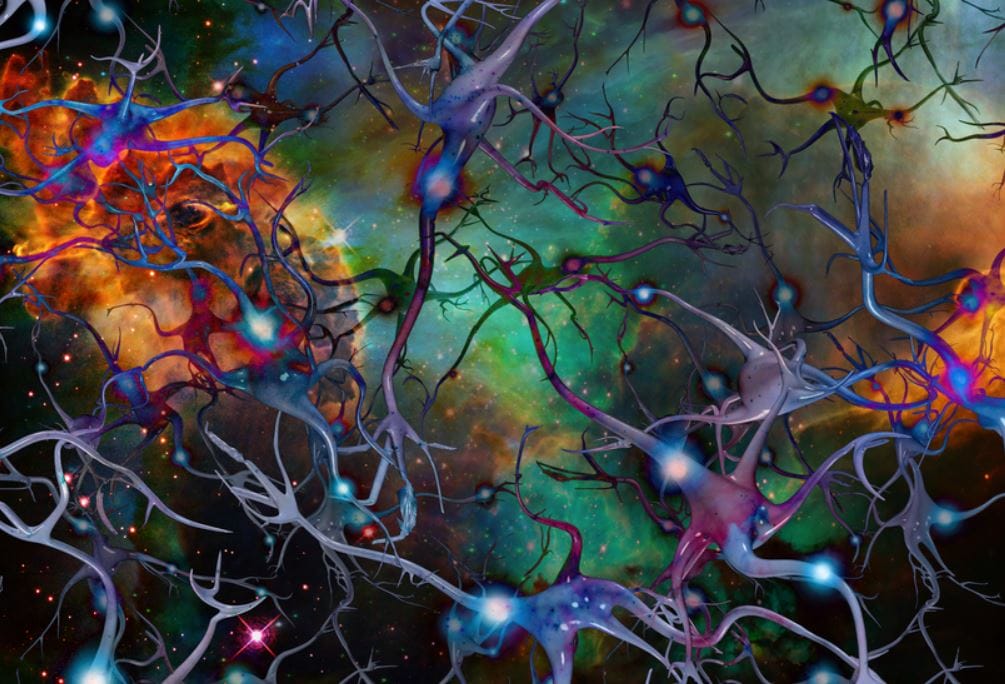Doctor’s Review of Pantocalcin [Hopantenic Acid]
December 23, 2018
Doctor’s review of Pantocalcin: indications, contraindications, application, side effects, and analogs.
The review is given by the doctor-psychotherapist of the highest category with the years of practice, Candidate of Medical Sciences: Galushchak Alexander Vasilievich
========================
Contents:
0:10 Drug classification and effects of Pantocalcin
0:41 Ingredients of Pantocalcin
1:21 Pantocalcin for neuroses, panic attacks, headaches, vegetative vascular dystonia, and memory
1:55 Pantocalcin for epilepsy and tics in children
2:18 Pantocalcin for children with enuresis, hypoxia, and ADHD
2:38 Pantocalcin for speech development disorders and stuttering
2:51 Form of release and dosing of Pantocalcin: 250 mg and 500 mg tablets
3:02 How to take Pantocalcin
3:24 Length of treatment with Pantocalcin
3:32 How to take Pantocalcin for memory
3:59 Taking Pantocalcin before or after food.
4:08 Tatking Pantocalcin in the evening
4:14 Repeating a course of Pantocalcin.
4:28 Stopping Pantocalcin
4:48 Pantocalcin for children
5:04 How to administer Pantocalcin to children
5:20 Dosing guidelines for children
6:13 How long is the Pantocalcin course for children
6:36 Side effects of Pantocalcin: allergies
7:25 Children vomiting from taking Pantocalcin
7:45 Pantocalcin overdose
8:38 Contraindications for Pantocalcin
9:02 Drug interactions with Pantocalcin
9:37 Analogues to Pantocalcin
9:55 Pantogam or Pantocalcin: which is better?
========================
Interviewer: Irina Lisitsyna
Psychiatrist: Aleksandr Vasil’evich Galschak
This video is for informational purposes. Please consult a specialist before taking any medications.
Irina Lisitsyna: What effect does Pantocalicin produce and to what group of drugs does it belong?
Galschak Aleksandr Vasil’evich: Pantocalcin is a nootropic which has several effects. First of all, it improves brain function, metabolism, and optimises blood circulation in the brain, all while acting as an anticonvulsant. The most suрprising thing about the drug is that it improves cognitive function––that is, concentration, memory, storing and processing information. These indications demonstrate how the drug, as a leading nootropic, has a wide range of applications.
IL: What is the main component that produces this effect?
AV: The main chemical component is hopantenic acid. This substance influences the function of neurotransmitters––that is, dopamine, noradrenaline, and serotonin. When we’re talking about strengthening the synaptic connections in neurons––in nerve cells––we’re talking about an improvement in the exchange of information in the brain. Elevated levels of serotonin and dopamine lead to better mood, increased activity, and feelings of strength and well-being. That means the nervous system becomes stronger and stronger as well as more efficient. For this reason, we often use the drug in neurology, addiction treatment, and psychiatry.
IL: What kinds of illnesses and conditions does the drug treat?
AV: As far as this medication is used in rehabilitation as well as severe conditions––let’s say, first and foremost it’s for chronic cerebrovascular disease and chronic disorders such as encephalopathy. It could be intoxication, or even conditions following alcoholic psychosis, rehab for withdrawal syndrome––in general, intoxication and addiction treatment. We also use it in pediatric neurology to treat developmental problems and neurological diseases.
IL: Can children take the drug for epilepsy and nervous tics?
AV: Yes, I’m glad you mentioned that. The drug’s anticonvulsant effect protects against seizures––and, as part of a complex treatment––can reduce overexcitement, tics, and symptoms of epilepsy. Doctors sometimes use the drug as part of a complex therapy, and as a monotherapy to treat unexplained symptoms.
IL: For what other pediatric conditions is the drug indicated? Can it treat enuresis or ADHD?
AV: For problems with the urinary system in children––that is, when urination isn’t controlled––we can use the drug to treat enuresis as part of a complex therapy involving reflexology and psychotherapy.
IL: How effective is the drug for treating speech development delays and stuttering?
AV: Since it alleviates anxiety and improves brain function, the drug is one of the best treatments for these kinds of disorders––precisely as a curative therapy.
IL: In what form and dose is the drug available?
AV: For convenience of use, the drug is available as a pill in two doses: they are 250 and five hundred milligrams.
IL: How should adults take the medication? In what does?
AV: Adults are prescribed the five hundred milligram tablet. Sometimes the treatment calls for three pills in a day so that the maximum therapeutic dose is around a thousand, one and a half thousand, two thousand, sometimes three thousand––that is, 3 grams a day to achieve a therapeutic effect.
IL: And how long is the course of treatment?
AV: The treatment sometimes lasts between one and a half to two months.
IL: How is the drug used in cases of severe mental or physical stress? Can patients increase the dose?
AV: Considering that stress––whether physical, school or work-related––can be intense and prolonged, we recommend a course of 250 milligrams two, three, sometimes even four times a day to help our patients. The length of the treatment course depends on the range of stressful circumstances: sometimes it can be up to two or three months. The drug helps the patient deal with stress without causing any side effects.
IL: Should you take the medication before or after eating?
AV: You should take it after meals. It’s recommended patients eat and have some water to avoid possible side effects.
IL: Can you take it in the evening?
AV: You can take the medication in the evening. It doesn’t interfere with sleep.
IL: When can you repeat a course of Pantocalcin?
AV: Considering the drug is non-toxic, you can repeat the treatment course two, three, or even four times a year. That means every three months or half a year depending on the condition for which the drug is indicated.
IL: We gradually raise the dose when starting the medication. Does the patient also need to wean off the drug when stopping it?
AV: Yes, we gradually reduce the dose when stopping the treatment. These drugs are psychoactive and influence vascular tone as well as the nervous system. The patient takes maintenance doses while gradually lowering the amount. Then, we remove the medication entirely.
IL: From what age can children take Pantocalcin?
AV: The official consensus is that children over the age of three may take the drug, sometimes, however, we make exceptions according to necessity. Depending on the condition, children may even take the medication from the age of one.
IL: How are the tablets administered to infants?
AV: The thing is, you need to crush the pills into powder (as many mothers do) and mix it with the child’s usual baby food. Just feed the infant with a spoon or out of a bottle.
IL: What dose of Pantocalcin should children take?
AV: Taking into account that we’re talking about a child of one or one and a half, we try to take the medication more often––that is, 4, 5, even six times a day, so that the daily dose is at a therapeutic level. That dose might sometimes reach one thousand milligrams in a day. That’s why we divide the total amount into 4 or 5 doses. Each dose might be between two hundred and three hundred milligrams. So, sometimes you might have to split a pill in half or even into smaller pieces depending on how many doses the child is taking.
IL: Taking into account age as well.
AV: Yes, age as well.
IL: The older the patient, the higher the dose.
AV: When the child is a bit older, they can take the medication as…well from a spoon with some drops of their favourite food or drink. They swallow it; drink it down. We administer the drug to many children this way.
IL: How long is a course of Pantocalcin for children?
AV: The length of treatment can range from one and a half to three––even four––months. Basically, we are setting a goal, and, as doctors, we are working to achieve the needed result. That’s why we determine dose and length of treatment according to our goals. In this case, we can say it’s flexible. Everything is in the hands of the physician and head of the department treating the child.
IL: What kinds of side effects does the drug have?
AV: In practice, the drug is well tolerated, that’s why parents and doctors shouldn’t worry too much. It’s sometimes prescribed from a very early age because side effects are not common. Sometimes it might cause irritation in children due to a headache or some other kind of discomfort. Sometimes it might cause nausea. Small children are sometimes unable to express themselves in words; we have to notice when they’re unwell. Older children describe dizziness, nausea––this kind of discomfort. It might be a state of over excitement or lethargy. However, these side effects pass very quickly when we minimise the dose. Then we can work to find an amount that doesn’t produce side effects. That is, the drug builds up in your system. We don’t need to stop it entirely.
IL: Is vomiting a possible side effect of Pantocalcin?
AV: Most often vomiting only occurs if the child overeats or the parents mix the medicine with food the child rejects or doesn’t tolerate well. Most often vomiting is because of the food or drink the containing the drug. Generally speaking, Pantocalcin does not cause vomiting.
IL: Is overdose possible with this drug?
AV: Overdose…We say that in general, very young children can not take this drug. Adults can take the medication––that is, massive overdoses have not been observed. However, sometimes people take huge doses––sometimes they can be as high as one hundred pills. Again, this is all connected to the central nervous system. Symptoms could include headache, nausea, sometimes confusion, overexcitement––and, conversely, nervous system depression or coma. In such cases we need to: perform a gastric lavage, detox the patient, ideally administer activated charcoal; however, the most import thing to do is control the patient’s intake of the medicine to make sure it doesn’t end up in the hands of children or teenagers. We know the packaging is childproof but ideally, the drug wouldn’t be in reach of children at all.
IL: Who shouldn’t take Pantocalcin?
AV: Like many drugs in the nootropic class, it is not recommended for pregnant women (especially in the first trimester), nor for women who are breastfeeding. All the same, the drug possesses a stimulating effect––as do all nootropics––and considering this, we need to make sure there are no side effects. Naturally, since the kidneys excrete the drug, this could be renal failure or other acute disorders.
IL: Can Pantocalcin be taken with other medications?
AV: In rehabilitation therapy, we typically combine Pantocalcin with other drugs. These are medications, vitamins, other nootropics, and vasodilators. However, sometimes we’re talking about psychotropic medications, painkillers, sleeping pills, or anti-depressants. Of course, we need to be careful when combining these drugs because they might compound or neutralise one-another, or produce an allergic reaction. That’s why in this case it’s essential that the patient’s doctor take control of prescribing, stopping, or refilling medications.
IL: Are there cheaper analogues to Pantocalcin?
AV: There are analogues to this medication. I’ll list this them off: there’s Calcium Hopantenate. This is the cheapest option; it’s reasonably affordable. Pantogam and Pantogam Activ are a bit cheaper, but the price is still considerably high.
IL: What’s the difference between medications like Pantogam and Pantocalcin?
AV: The active component is the same in both drugs. The difference is that a different company manufactures Pantogam in a different factory. It is available as a syrup. In treating children, this is a big advantage. That is, the syrup comes ready to be administered with a measuring spoon. The bottle itself is 100 millilitres, so in one millilitre there are 100 milligrams. This makes it quite easy to measure doses. The syrup is more convenient for mothers and nurses caring for children. It is a bit less expensive than Pantocalcin, but, of course, this is an advantage.



